The Mechanism of Rising Damp – Simple, Non-Technical Explanation
Rising damp is generally believed to be capillary action: the walls acting as a sponge wicking up liquid moisture from the ground making the walls wet. Although this is a good analogy to illustrate the concept of capillarity, real walls behave differently.
To understand how water rises in masonry, we need to understand what drives moisture in Nature.
The video below explains the concept, or feel free to read below.
The Water Cycle in Nature
The movement of water (and moisture) in nature is described by the Water Cycle. Liquid water falls as rainwater, accumulates in the ground, then evaporates and rises upwards as vapours. So moisture is constantly evaporating upwards from the damp soil into the air - the planetwide Water Cycle being driven by the Sun's energy and to some extent by Earth's underground heat.
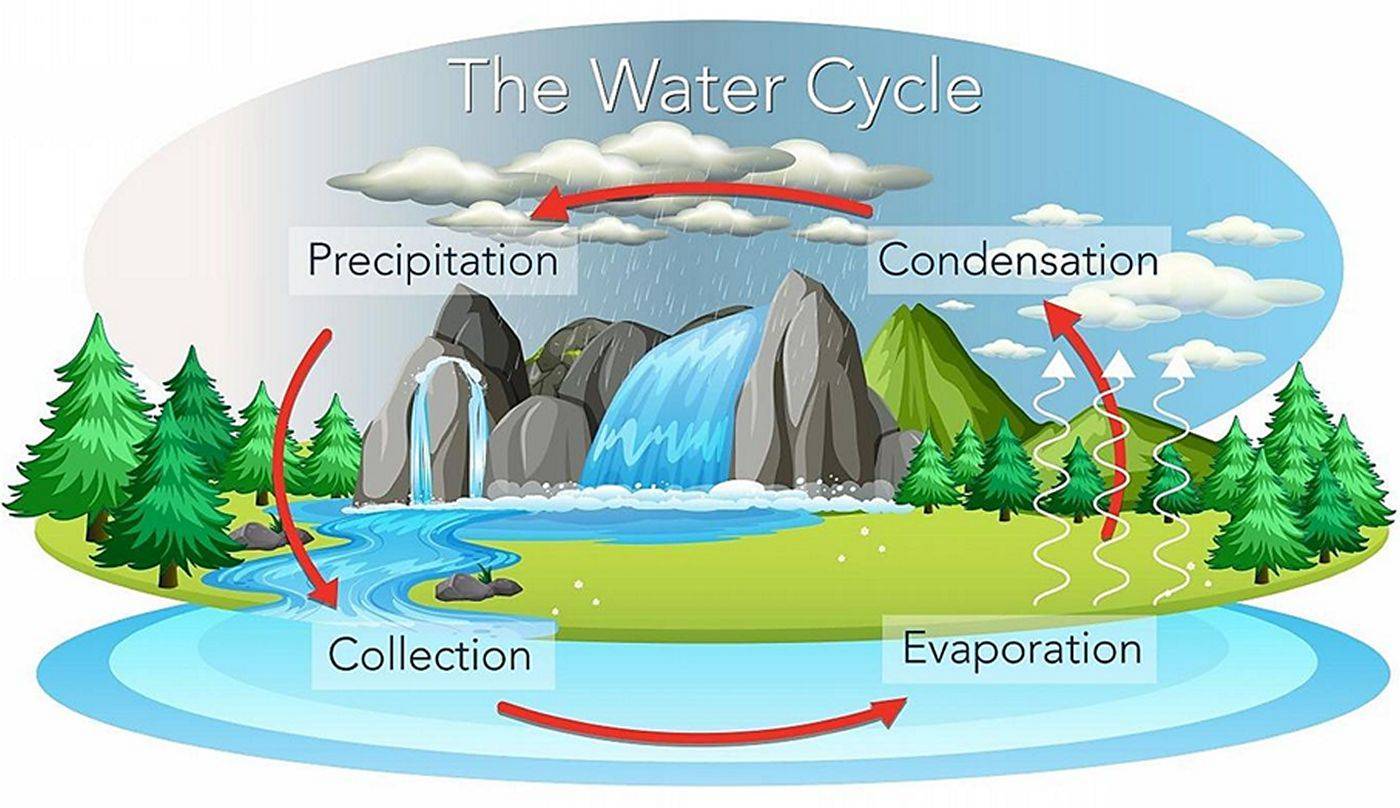
The water cycle in nature
Rising Vapours
When a wall is built onto the soil – blocking the free evaporation of moisture – the moisture from under the wall will evaporate INTO the capillaries of the porous wall fabric. The extremely small volume of the capillaries get instantly saturated by the rising vapours, and due to the ongoing vapour influx (ongoing vapour pressure) liquid water will form inside the capillaries.
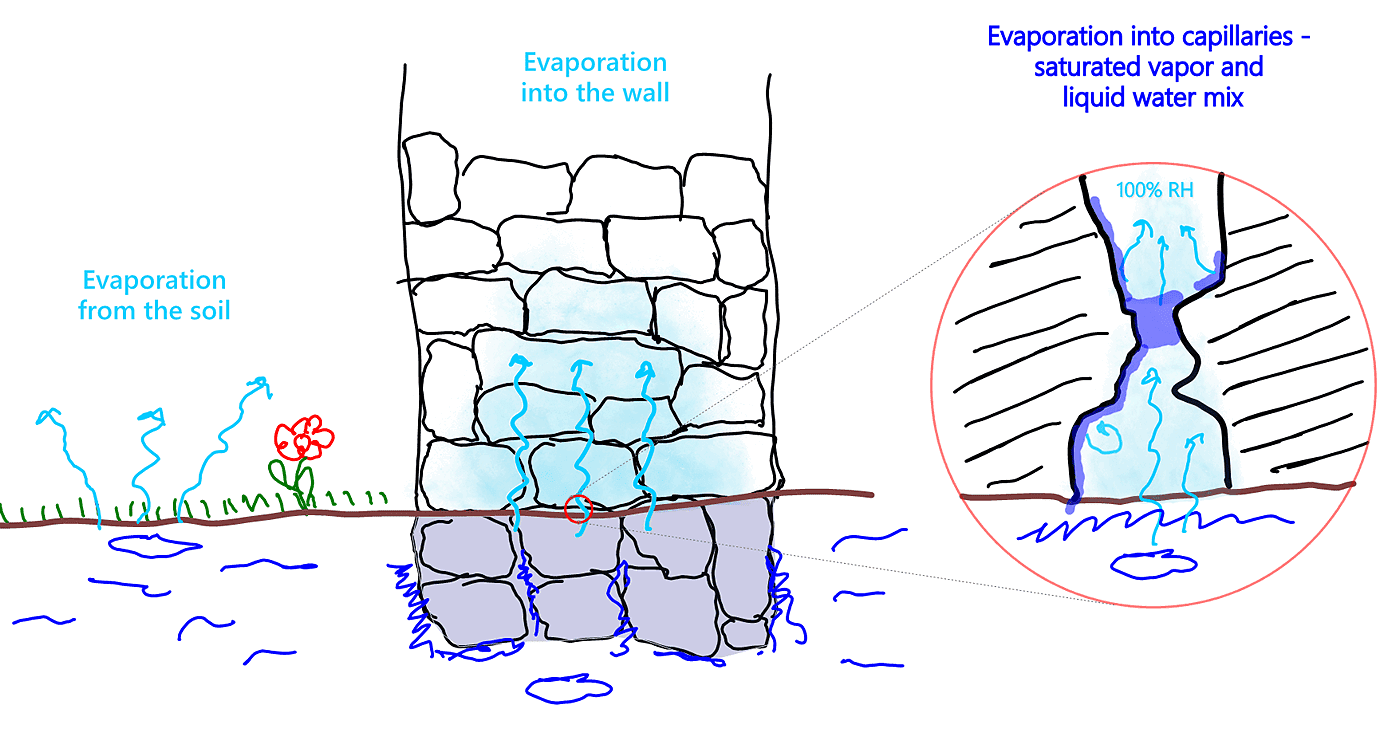
Rising damp is driven by the ongoing evaporation from the soil
Thus, the primary mechanism of rising damp is VAPOR MOVEMENT from the evaporating damp soil. Soil evaporation, through a number of stages, can indirectly lead to capillary action and the development of rising damp over time.

Rising damp and its development stages - accumulating vapors gradually develop into capillary flow
Indirect vs. Direct Capillary Action
It is important to understand that rising damp can be caused by ongoing vapour evaporation alone without liquid moisture at the base of the walls. In real life, most of the time there is very little liquid moisture present in the drained topsoil, and the water table being much lower, moisture can only rise via soil evaporation, leading to indirect capillary action inside the wall capillaries.
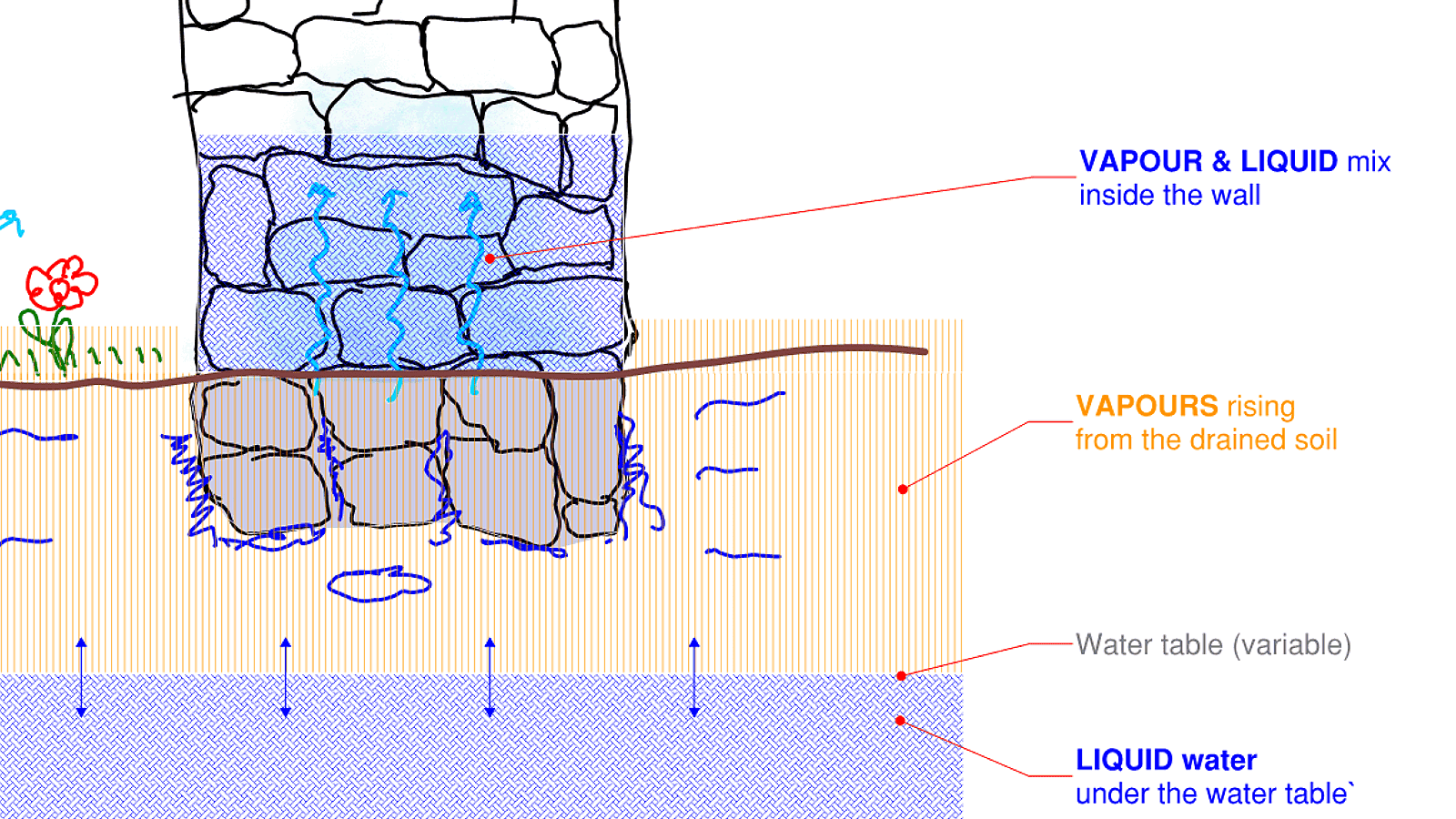
Indirect capillary action
Obviously, when liquid water and direct capillary action is present rising damp develops much faster - the quantity of water inflow determining its speed of evolution and rate of severity. However, such cases are relatively rare and occur in limited circumstances (e.g. during flooding, water-saturated ground, extreme rainfall, extremely high water table etc.) This can be very easily demonstrated with some simple lab experiments.
What Makes Rising Damp Different?
To complicate matters even further, the water brings up from the ground and deposits into the masonry all sorts of minerals (also known as salts) - the salts making rising damp a completely different proposition from ordinary rainwater wetting.
The only reason why rising damp requires attention is because of the presence of salts, not water. Salts in the "rising damp area" (lower metre or so) cause a number of important permanent and irreversible changes, while also reducing the breathability of the walls. These factors must be well understood and taken into account during the chosen remedy action.
The Reason Behind the Confusion
This piece of missing key information - that vapour movement alone, without liquid moisture, can cause rising damp over time - created an industry-wide confusion on this subject, leading to conflicting viewpoints on the subject (e.g. rising damp doesn’t exist, it's extremely rare, it can't be found etc.).
The Mechanism of Rising Damp – Technical Research Data
The fundamental mechanism of rising damp and the role of water vapours in it can be verified with lab experiments. Here are some of the the research experiments we have done.
Experimental Setup and Methodology
We have built a small wall consisting of 4 bricks. Instead of mortar we used dry brick dust from the same bricks, a common practice for lab simulations.
The bricks were placed on a 100 mm thick well-drained but humid soil-bed placed in a deep perforated tray, positioned in a second, shallower tray used to control the amount of water vapors present under the bricks, with precise wetting of the soil from the bottom.
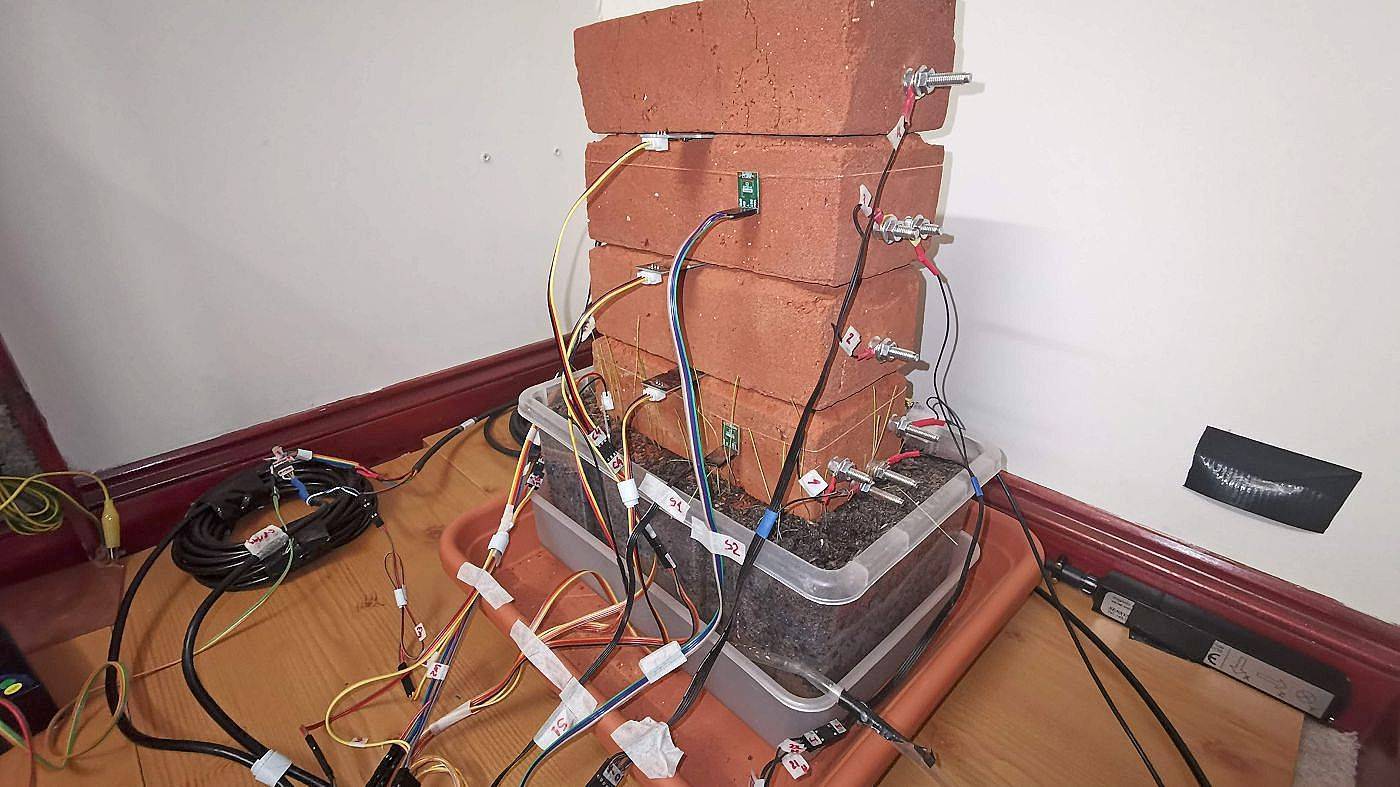
Experimental setup
Detailed measurements have been taken during the experiment using an array of embedded micro-sensors, collecting humidity and temperature readings from the soil, mortar courses, depth and surface of the bricks as well as of the ambient environment. In addition, various electrical parameters of the fabric such as the spontaneous voltages and currents present in them have also been recorded.
The readings have been taken by an 80-channel Keithley Tektronix DAQ-6510 professional data logging system operating at 0.0025% accuracy.
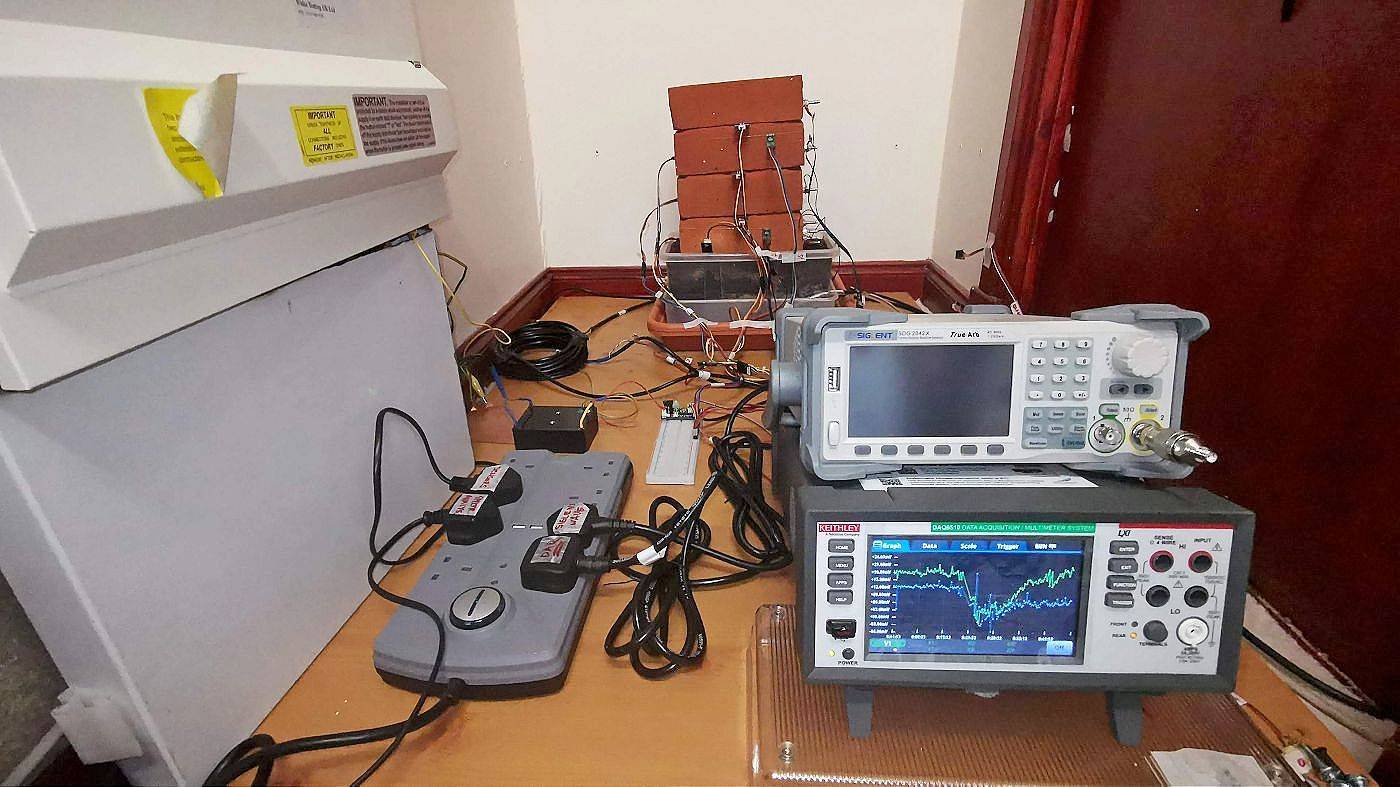
Data logger taking readings
The experiment has been divided into 2 stages:
- Stage 1: Natural soil evaporation (drying soil): aimed to understand to what extent a drained soil with no liquid moisture in it (and no capillary action) affects the moisture content of the building fabric.
- Stage 2: Controlled wetting of the soil (damper soil): aimed to understand how the increased evaporation from a rising water table affects the moisture content a wall.
Stage 1: The Effects of Natural Soil Evaporation
Once the soil sensor is inserted into the soil, it starts registering the moisture content of the soil (black line). When the plastic foil is pulled from under the bricks – acting as a damp proof course at the start of our experiment – vapors now can freely start evaporating into the first brick. (see Graph 1)
As a result, in depth the brick starts accumulating moisture (dark blue line). The humidity on the surface of the brick (light blue line) however stays at the level of ambient humidity (orange), around 36% RH.
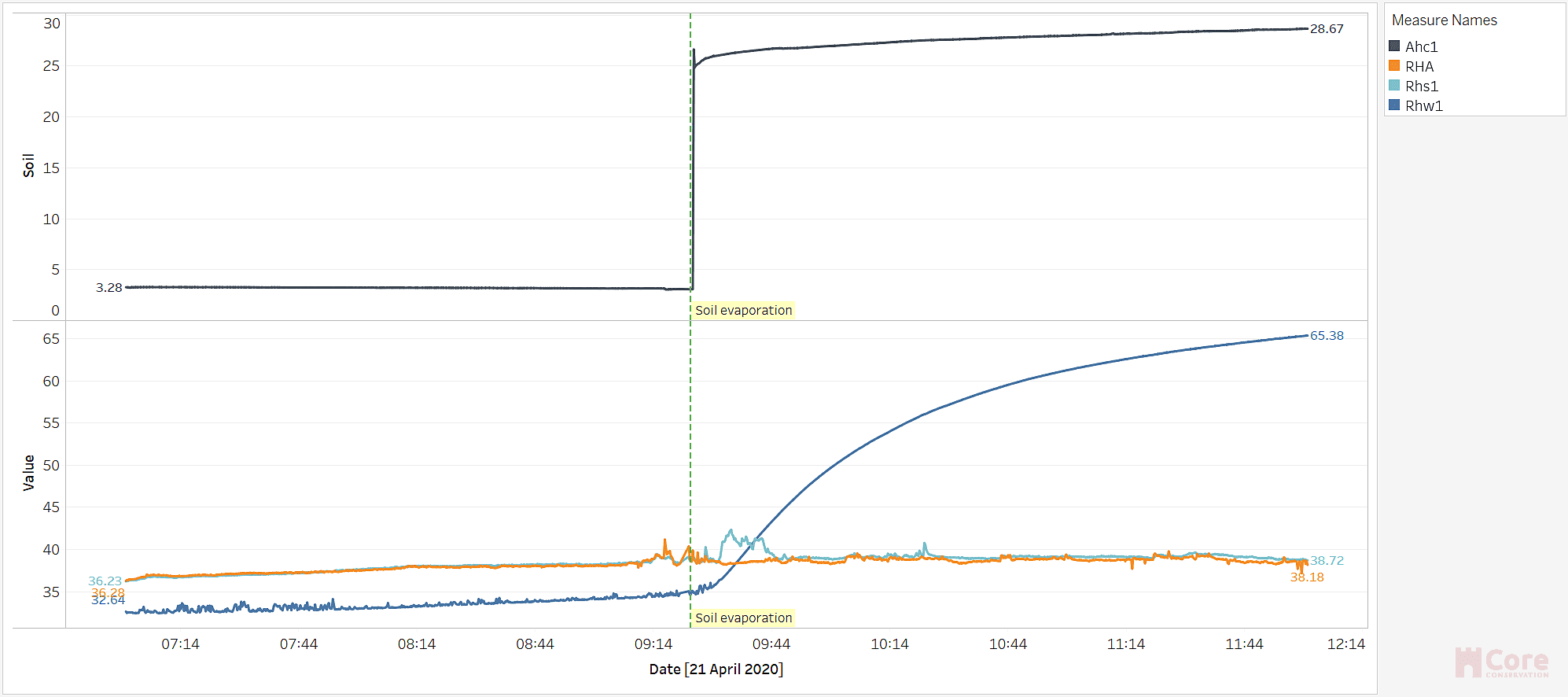
Graph 1: Start of experiment: soil evaporation starts wetting the first brick
Let’s fast forward 10 – 11 days into the experiment. During this time the damp soil was naturally collecting humidity from the soil. Some interesting observations at this stage (see Graph 2):
- The moisture content of the soil (black line) under the bricks gradually increases, peaks then slightly declines as the surface of the soil starts drying out.
- The depth moisture content of the lowest brick (dark blue line) increases from ambient 36% RH (orange) to about 87% RH. This shows that the amount of moisture present in a well-drained drying soil is more than enough to wet the bricks sitting on it. Imagine what a soil constantly wetted by rain can do (more on that next). As a result, drainage will not solve rising damp, although often improves the situation, especially in case of clayey soils.
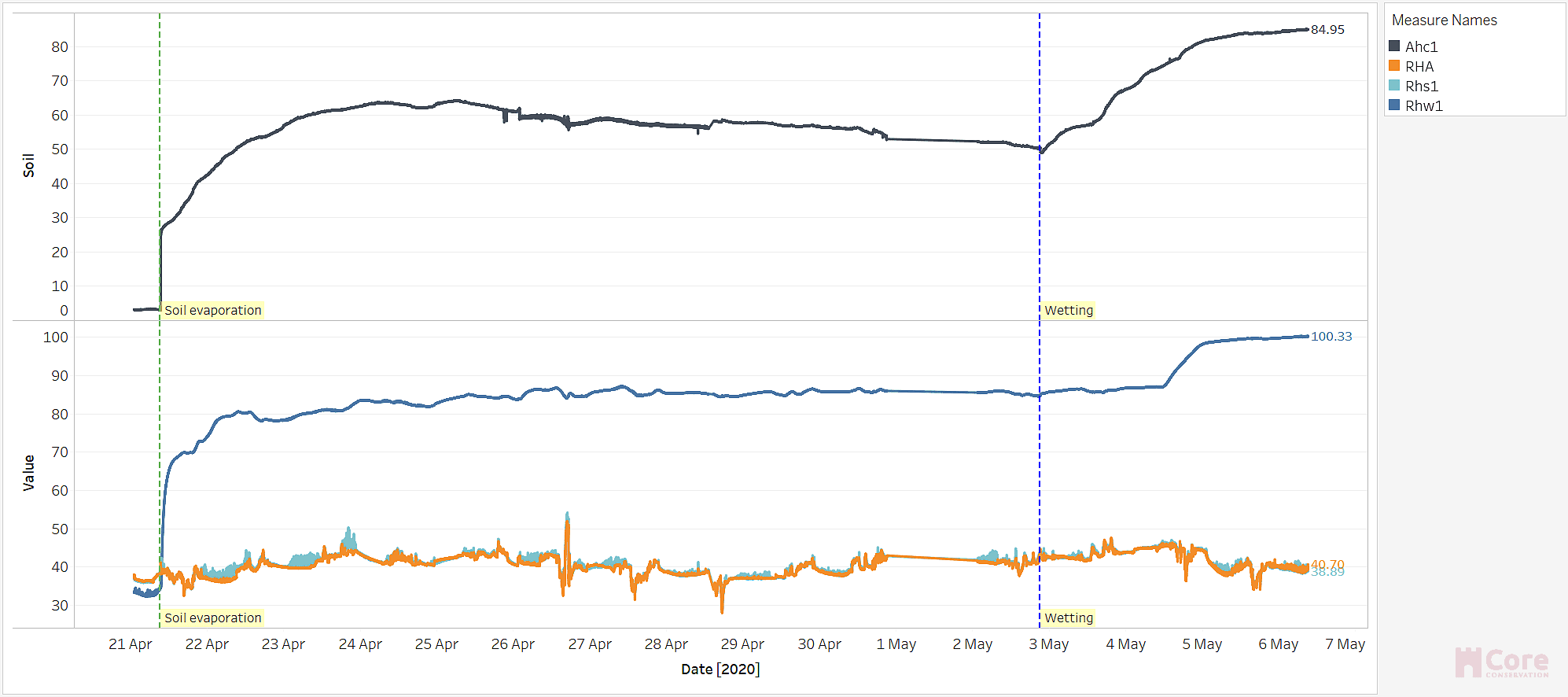
Graph 2: Drained soil wets the masonry by evaporation
- We can also see that the surface and the depth of the bricks behave differently and have different drivers: the surface of the fabric is driven by ambient humidity (orange line), while the depth of the fabric is driven by the soil humidity (black line). (see Graph 3)
- Ambient changes barely impact the depth of the fabric indicating that the effect of surface changes is negligible in depth.
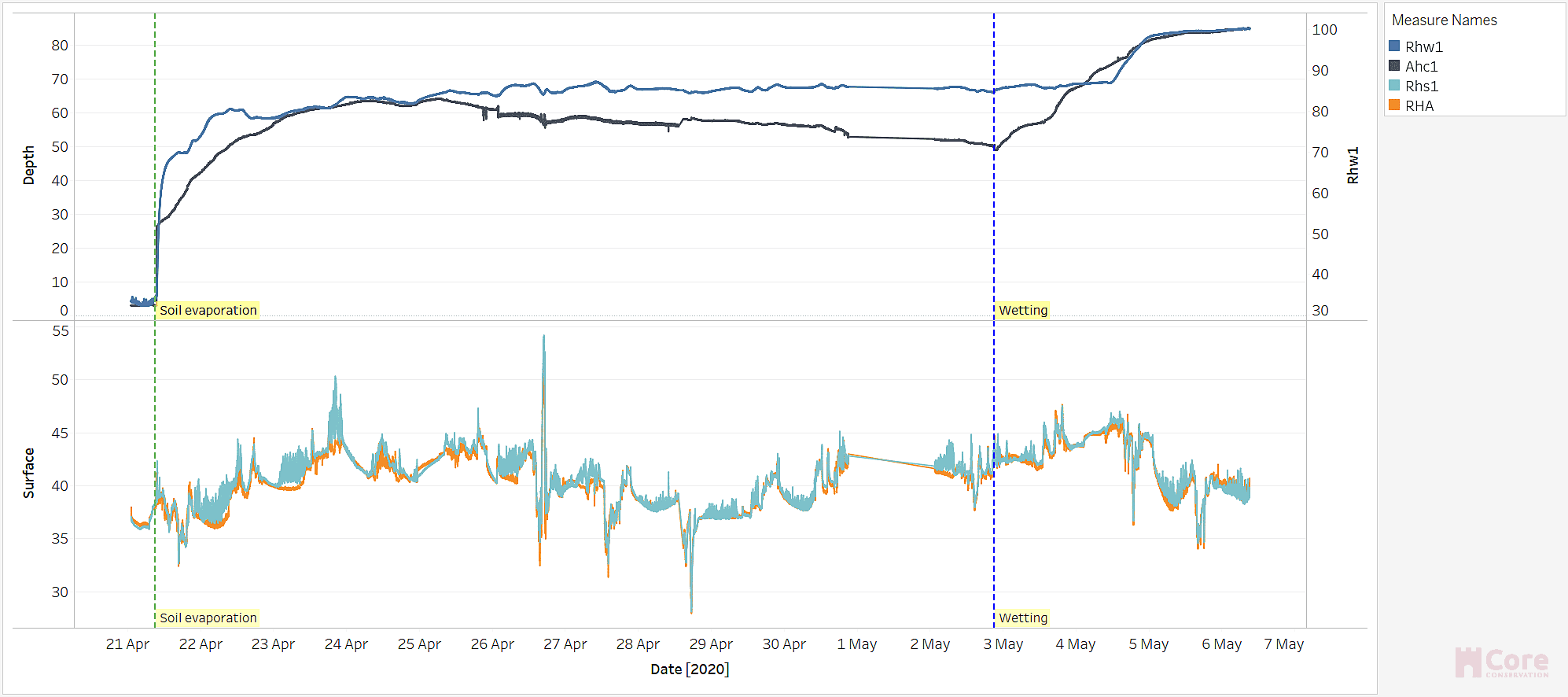
Graph 3: Surface humidity of the bricks is controlled by the environment, depth humidity by the soil
This concludes the first stage of the experiment.
Stage 2: The Effects of Soil Wetting
Next, 12 days into the experiment we applied liquid water at the base of the 100 mm thick soil bed under the bricks, simulating a more intense soil evaporation from an increased water table (e.g. from rain).
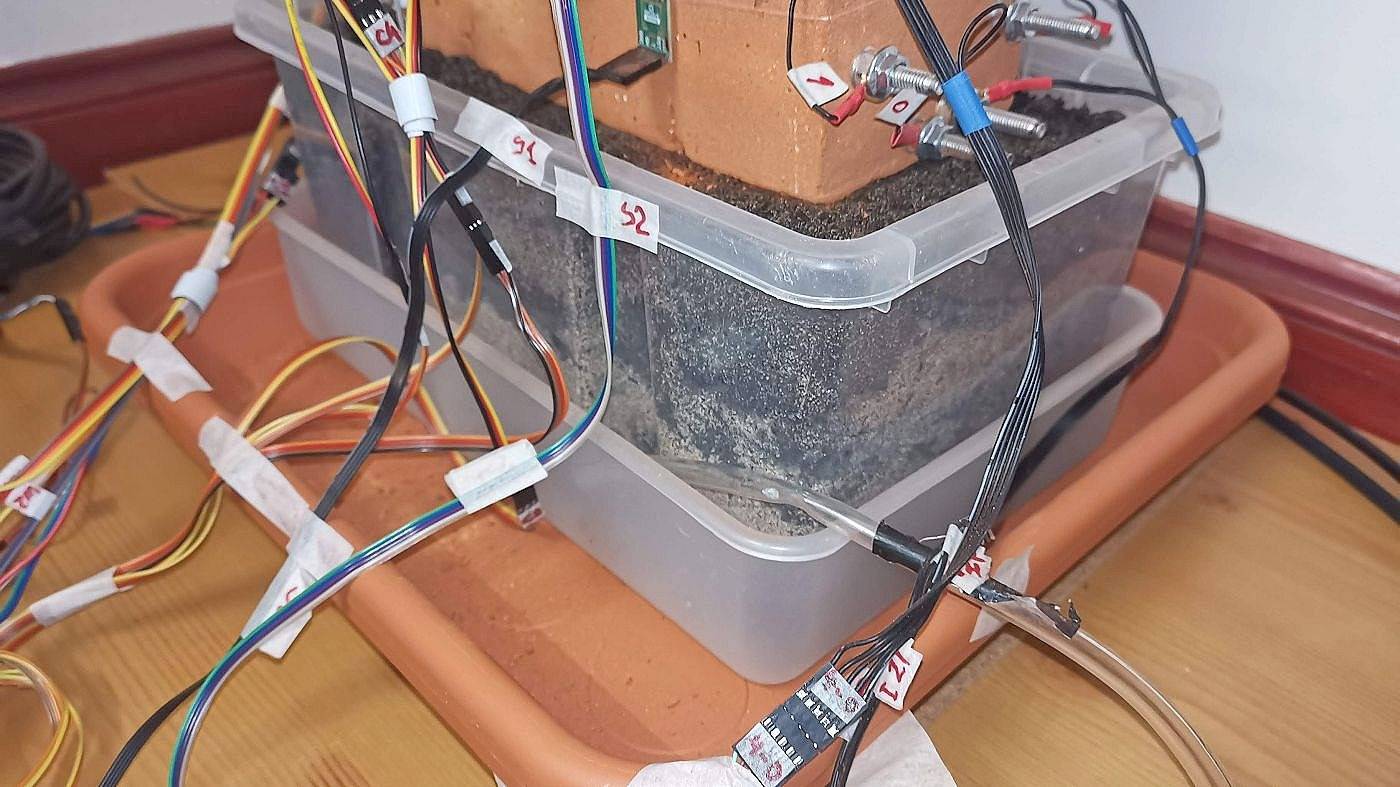
Wetting the soil under the bricks
The changes caused by the increased evaporation can be broken down into several smaller phases (see Graph 4):
- Phase 0: Before soil wetting: Stage 2 starting point. The drained soil has been freely evaporating into the wall fabric for over a week.
- Phase 1: Soil wetting starts: after wetting the soil from the bottom the vapor content of the soil under the bricks starts rising (black line).
- Phase 2: Vapor rises in 1st row of bricks : vapors migrate from the soil into the 1st brick (dark blue), making its moisture content rise, initially slowly then much faster.
- Phase 3: Liquid moisture in 1st row of bricks (saturation): the capillaries of the first brick become saturated with water vapors and around 99% RH a transition between vapor and liquid phases occurs. This phase change is very nicely shown by another parameter we captured, the spontaneous wall potential (red line), which sharply drops from about +200 mV to -50 mV. Why this happens? In a nutshell: water vapors are positive, liquid water is negative. A change of sign of the voltage indicates a transition from vapor to liquid phase, an ongoing wetting of the masonry.
- Phase 4: Vapor rises in 2nd row of bricks : water vapors start migrating through the 1st mortar course and into the 2nd row of brick. The moisture content of the mortar course (grey line) and the 2nd row of bricks (light blue line) starts rising.
- Phase 5: Saturation 1st mortar course: moisture migration in the 1st mortar course speeds up (grey line), while the moisture content of the 2nd row of bricks also increases steadily.
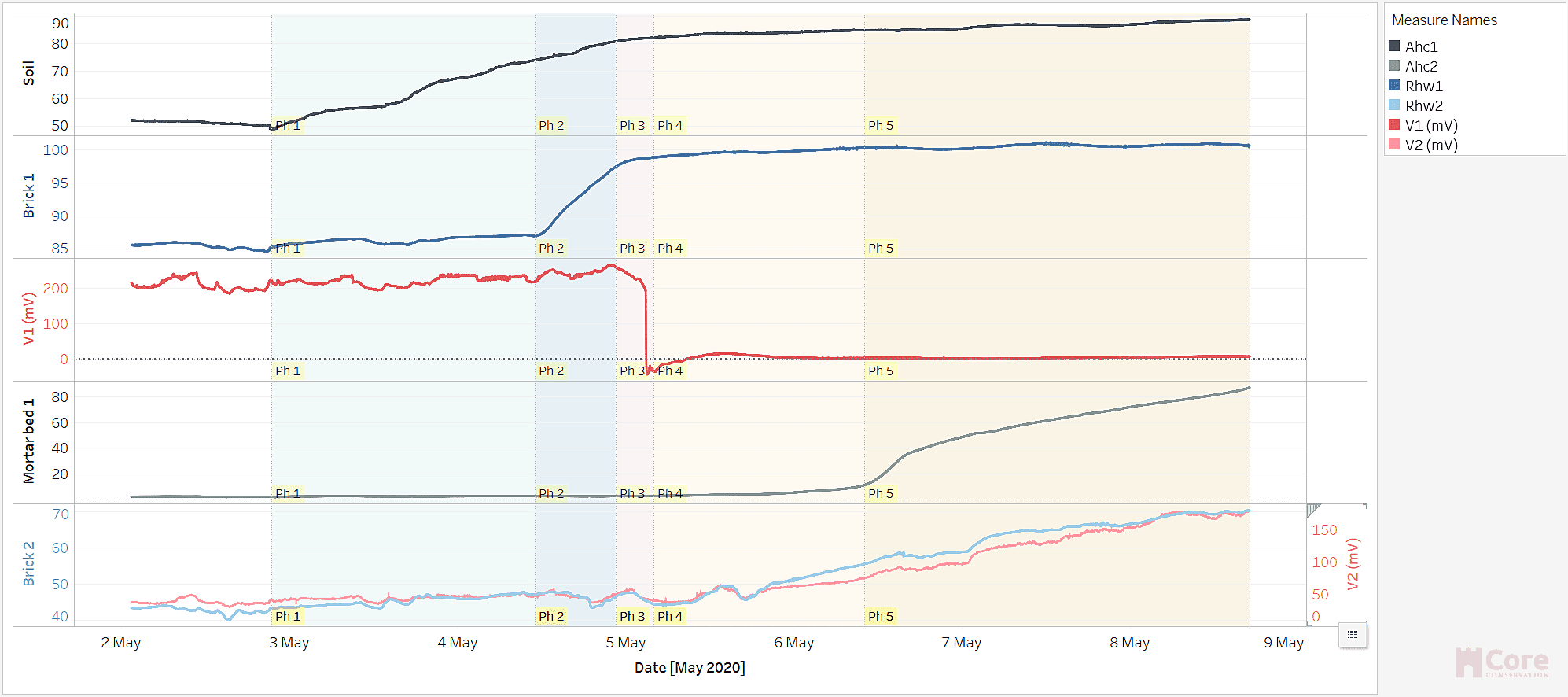
Graph 4: Step-by-step development of rising damp, its phases
This experiment shows the step-by-step upward migration of moisture: from the soil through the 1st row of bricks, 1st mortar course, 2nd row of bricks and so on. The pattern is obvious and it all occurs on its own, without any additional moisture source or mechanism being present – no water leaks, no moisture barriers or cement, no condensation, nothing at all. Soil evaporation is a standalone, self-sufficient wetting mechanism; its accumulation leading on its own to rising damp.
This lab experiment detailing the rise of moisture in “slow motion” in a controlled environment only captures the beginning of the process. But it is not difficult to imagine that if a wall is subject to the presence of soil moisture 24/7 for several years, decades or even centuries, a significant amount of moisture can accumulate inside the fabric – initially as vapors, gradually leading to liquid moisture transport. Once liquid water is present, even as a thin liquid film on the capillary walls, salts migration starts into the wall fabric, leading to salt crystallization and subsequent plaster damage - the combination of moisture and salts gradually developing the typical signs of rising damp.
Summary
- Rising damp can be caused by vapor evaporation from under the building into the porous building fabric as a result of natural soil evaporation.
- The wetting of brickwork from soil evaporation is a standalone, self-sufficient mechanism that alone can create rising damp over time, without needing any additional moisture sources.











